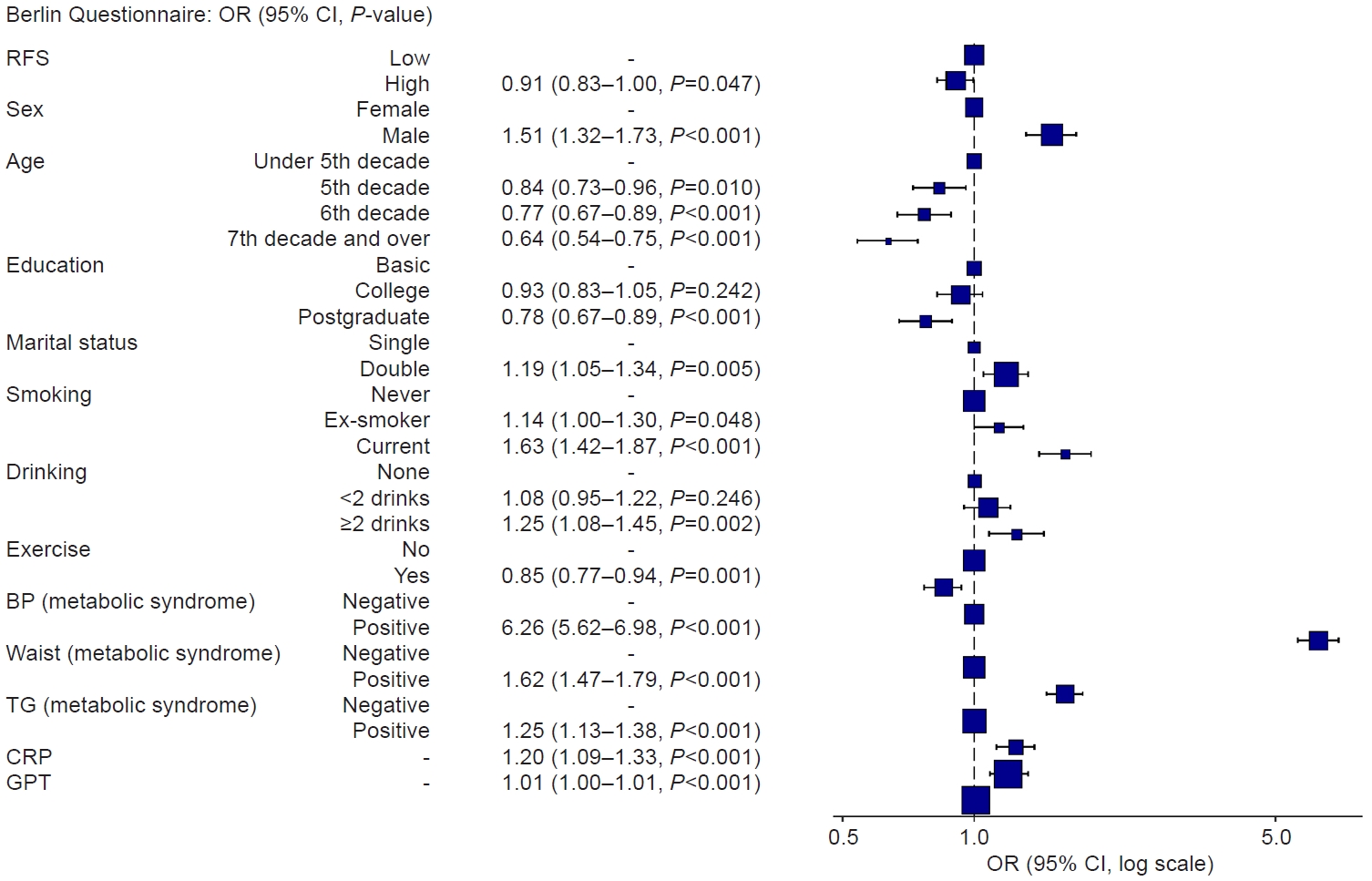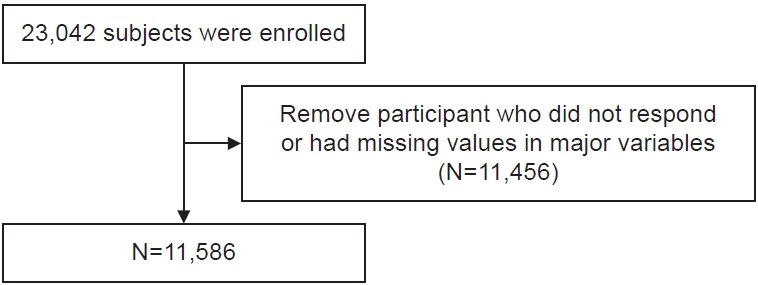| Korean J Health Promot > Volume 24(2); 2024 > Article |
|
ABSTRACT
Background
Methods
Results
Supplementary material
Supplementary Table 1.
AUTHOR CONTRIBUTIONS
Dr. Jong Seung KIM had full access to all of the data in the study and takes responsibility for the integrity of the data and the accuracy of the data analysis. All authors reviewed this manuscript and agreed to individual contributions.
Conceptualization: TP and JSK. Data curation: TP and JSK. Formal analysis: JSK. Methodology: TP and JSK. Software: JSK. Writing–original draft: JSL. Writing–review & editing: BO and SH.
Fig. 2.

Fig. 3.

Table 1.
Values are presented as number (%) or mean±standard deviation.
BP, blood pressure; BUN, blood urea nitrogen; Cr, creatinine; CRP, C-reactive protein; FBS, fasting blood sugar; GGT, gamma-glutamyl transpeptidase; GOT, glutamate-oxaloacetate transaminase; GPT, glutamic pyruvic transaminase; Hb, hemoglobin; HDL, high-density lipoprotein; TG, triglyceride.
Table 2.
Values are presented as number (%) or mean±standard deviation. Adjustment for age, sex, education, marital status, income, smoking, drinking, exercise, fasting glucose, BP, waist circumference, HDL, TG, CRP, Hb, BUN, GOT, GPT, GGT.
BP, blood pressure; BQ, Berlin Questionnaire; BUN, blood urea nitrogen; Cr, creatinine; CRP, C-reactive protein; FBS, fasting blood sugar; GGT, gamma-glutamyl transpeptidase; GOT, glutamate-oxaloacetate transaminase; GPT, glutamic pyruvic transaminase; Hb, hemoglobin; HDL, high-density lipoprotein; OR, odds ratio; RFS, Recommended Food Score; TG, triglyceride.
REFERENCES
- TOOLS
-
METRICS

-
- 0 Crossref
- 0 Scopus
- 2,289 View
- 23 Download
- ORCID iDs
-
Jung-Sun LIM

https://orcid.org/0000-0003-1590-171XJong Seung KIM

https://orcid.org/0000-0002-8416-3872 - Related articles




 PDF Links
PDF Links PubReader
PubReader ePub Link
ePub Link Full text via DOI
Full text via DOI Download Citation
Download Citation Supplement
Supplement Print
Print


